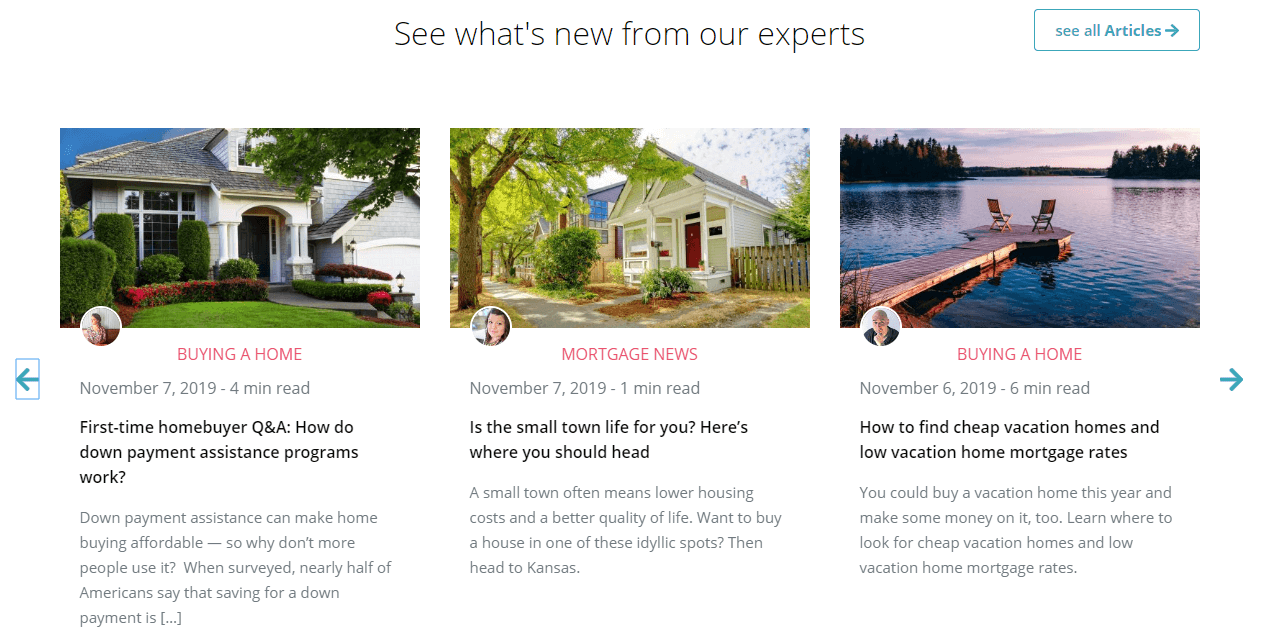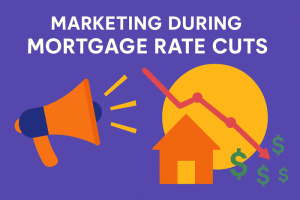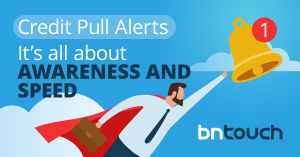Summary
This article offers a guide to creating impactful mortgage blog content. It emphasizes structuring posts effectively, selecting relevant topics, and implementing SEO strategies. Following these tips ensures that blog content attracts traffic and drives engagement.
Every mortgage broker wants more traffic to their website. The more traffic you get to your website, the more opportunities you have to get leads into your pipeline. There are lots of tips and tricks you can follow to help Google rank your website better, but at the end of the day, the key to getting more traffic to your mortgage company’s website is fresh content. The more content you have on your site, the more pages Google will index, the higher your domain authority will be and the more searches you will turn up in when people are searching for their mortgage financing needs.
The problem though is that you need to methodically think out your content. You can’t just post any old content simply for the sake of posting more content. If you do this, you risk attracting “any traffic” to your website. Let’s be very clear about something. You don’t want “any traffic”. You want the “right traffic”. In this case, “right” refers to traffic that is comprised of people that are your ideal potential clients.
To ensure that you are always attracting this ideal traffic, we’ve put together a useful guide you can follow to ensure that every one of your blog posts is done with purpose and your ideal client personas in mind.
You can see our full content marketing guide for mortgage pros here.
Steps To Writing The Perfect Mortgage Blog Post
Focus On The Title
In many ways, your blog’s title is the most important thing. There is a ton of information on the internet. When someone does a search, if the title isn’t compelling enough, they are going to scroll right by it. As a result, your title needs to be compelling. So much so that it’s going to make the reader feel like they have to click on it to learn more.
When working on a title, always assume your first idea is too bland and needs to be punched up. Give some thought to how to angle it to be as interesting as possible.
For example, if you want to write a blog about personal finance tips to follow when you are in escrow for a home loan, the title of “Financial tips to follow when you are in escrow”, while informative, is lacking punch. Instead, consider something such as, “In escrow? Skip these financial tips and risk losing your home loan”.
The title engages the reader’s emotions. First off, many people won’t be familiar that there are missteps that can occur in the closing process. More importantly, though, the home buying process is a very emotional one. If you can plug directly into that emotion, you’re all but guaranteeing that a person searching on the web is going to click on your article. After all, who wants to lose the home that is going to be the home of their dreams?
Do Your Keyword Research
Once you’ve done your brainstorming on your title, it’s time to do your keyword research. Keyword research is important because it will help you create a title that will help your blog post perform well on search engine results pages. The more optimized your title, the more easily people will find your article in search engine results pages.
We recommend using tools like SEMrush or Google’s Keyword Planner to determine exactly which terms people are searching for. Look for keywords that are popular, but not super popular. If you can work a search term naturally into your blog’s title, it will be much more likely the blog post will rank higher.
Pro Tip: Super popular keywords are much harder to rank for, so start with less popular keywords first. It’ll greatly increase the chances of your post ranking in Google searches.
For instance, maybe you find out “financial tips” is a very broad keyword that shows up in way too many search results. But, when you looked at the keyword “personal budgeting” you see it is searched frequently, but not as often.
Once you’ve pinpointed the keyword you want to target, rework your title. So in the example above, your blog title would be something like, “Skip these personal budgeting tips and risk losing your home loan”.
Optimize Your Title
So we’ve got a pretty good start on our title, but we are not done yet. We need to further optimize it to make sure it performs as well as possible. Some metrics you want to keep in mind when creating blog titles are the following:
- The ideal blog post title length is 60 characters
- Headlines between 8 and 12 words are shared most often on Twitter
- Headlines between 12 and 14 words are liked most often on Facebook
So, in this case, the title we are using as our example is 65 characters, comprised of 11 words. In this case, it looks pretty good, but you might want to see if there is any possible way to shrink it by 5 characters, if possible, to be as optimized as possible.
Create A Meta Description
A meta description technically is an HTML attribute that explains a summary of the content on a given web page. More importantly, though, it’s also the excerpt that displays below the search engine result when your blog post pops up on a web search.

A combination of the headline, URL, and meta description work together to convince searchers to click on the link to read your entire blog post, so you’ll want to put thought into what to write for this piece of your blog post, too.
In general, you want to make sure the entire length of your meta description is under 155 characters.
Set A Featured Image

A featured image usually is the image at the top of your blog post, and also the small thumbnail image that is on the blog roll (the index page of your blog). Again, operating on the idea that you want to intrigue the reader, you want your image to be interesting, to draw them in and compel them to read more.
The image should, of course, reflect what the article is about. Like the title, you also don’t want a boring, obvious image. You want something that draws emotion from the reader.
For instance, sticking with the above example, here is a featured image that could be appropriate for your article:
PRO TIP: Be sure to add an alt tag with the title of your article to the featured image. The benefit of this is that your blog article will also show up in image searches, which may draw some bonus traffic to your article.
Create A Succinct Introduction
The most important thing to remember about online traffic is that everyone has a bit of A.D.D.
To those ends, the introduction to your blog article has to quickly grab your reader’s attention and compel them to want to read on. In the introduction, you should be able to tell your reader what the post is about and what value they will get from reading the entire article.
Be honest. The worst thing you can do is create a “click bait” introduction, leaving your reader feeling like they were taken advantage of after they read your article.
For instance, sticking with the example of finance tips to ensure you don’t lose your home noted above, maybe your introduction paragraph would be something like this:
Sally and George spent months looking for their dream home. They put in offer after offer, only to be outbid by other couples. Then one day, it finally happened. They found the perfect home they wanted to call their own and their offer was accepted. The home went into escrow and while they thought they were on their way to becoming homeowners, their dreams were squashed when a series of bad financial decisions caused their lending institution to revoke their loan approval.
Today we want to share with you some financial tips to consider when you are in escrow, ensuring your escrow process rolls smoothly and you finish your path to home ownership.
Remember To Make Sub-Headers
Like your meta description, sub-headers are an on-page SEO element that helps your blog post rank on search engines like Google. Sub-headers help the search spiders break up your blog post into sections to determine what the article covers.
Visually for your reader, sub-headers are also important, as it helps them understand all the parts of the story you want to tell.
When you create your sub-headers, in your control pallet in your content management system, you want to be sure to highlight them and select the text type of H2 or smaller (e.g. H3, H4, H5, etc.). This is what tells search engines that your sub-headers are actually sub-headers. Most blog platforms like WordPress will have sized header options in a drop down menu like “header 1”, “header 2” and “header 3”.
Think of the headers like the chapters in a book. The article title is the title of the book and you want to place a header where each different chapter of your article is. These chapters will be your H2’s and anything you break down smaller will be your H3’s.
Pro-Tip: Remember your keyword research. Whenever possible, try to work keywords you want to rank for in your sub-headers.
Always Add Graphics/Video
Articles that include images and especially videos are actually prioritized by Google to show up higher in the search results than those that don’t. You can go to websites like fiverr.com to have your written articles turned into quick graphical videos for just $5.
It’s also beneficial to break up an article with a graphic or video in order to hold the reader’s attention longer.
For instance, in this article, we included an illustration of what a meta description looks like inside a search engine results page.
The change in format from written word to graphical element switches things enough to keep your reader focused.
Always Include A Conclusion
When you are at the end of your article, make sure your reader knows the article is coming to an end. Even better, give a succinct clear recap of what the challenge was and how this article solved it. That will reinforce in the reader’s mind the value that they gained from spending the time to read your article.
Remember The Call to Action (A.K.A The Next Step)

You’ve come this far and your blog post is on it’s way to being a well optimized, perfect post. Let’s finish strong. The next step you want to focus on is to guide a potential lead into your funnel and down the road to becoming a client for your mortgage business. The reading of the blog is just the first step in a journey. There has to be a next step.
This is where your all to action comes in. A call to action at the end of a blog article is meant to offer related content that dives deeper. The item of value associated with your call to action could be an ebook, a video, a newsletter, consultation or even a PDF cheat sheet. Whatever it is, make sure that you collect the persons name and email address in order to receive it.
At the end of the day, you want to make it clear that while they may have learned a lot from your article, there is more and the call to action needs to be compelling enough to make them want to learn more.
Are You Ready To Produce Content?
Now that you have a good idea of how to build the perfect blog post, it’s time to go through and optimize your past posts and start planning for the future. Remember, the most important factor is always remembering that you are not creating content for the sake of creating it. You are creating content to attract the ideal potential clients for your mortgage business.
Key Takeaways
- Select topics relevant to your audience.
Focusing on borrower concerns increases the impact and reach of blog content.
- Optimize posts for search engines.
SEO strategies ensure your blog appears prominently in search results.
- Structure content for clarity and engagement.
Organized posts keep readers interested and convey information effectively.
Commonly Asked Questions
- What makes a mortgage blog post effective?
An effective post is engaging, informative, and SEO-optimized. It addresses borrower concerns and provides actionable insights to attract and retain readers.
- Why is SEO important for mortgage blogs?
SEO ensures posts rank high in search results, increasing visibility. This drives organic traffic and helps lenders reach potential clients.
- What content should a mortgage blog include?
It should focus on trending topics, borrower pain points, and industry updates. Clear calls to action and relatable language enhance its appeal.
- How can blogs benefit mortgage businesses?
Blogs establish authority, educate clients, and improve online presence. They are a cost-effective tool for lead generation and brand building.





